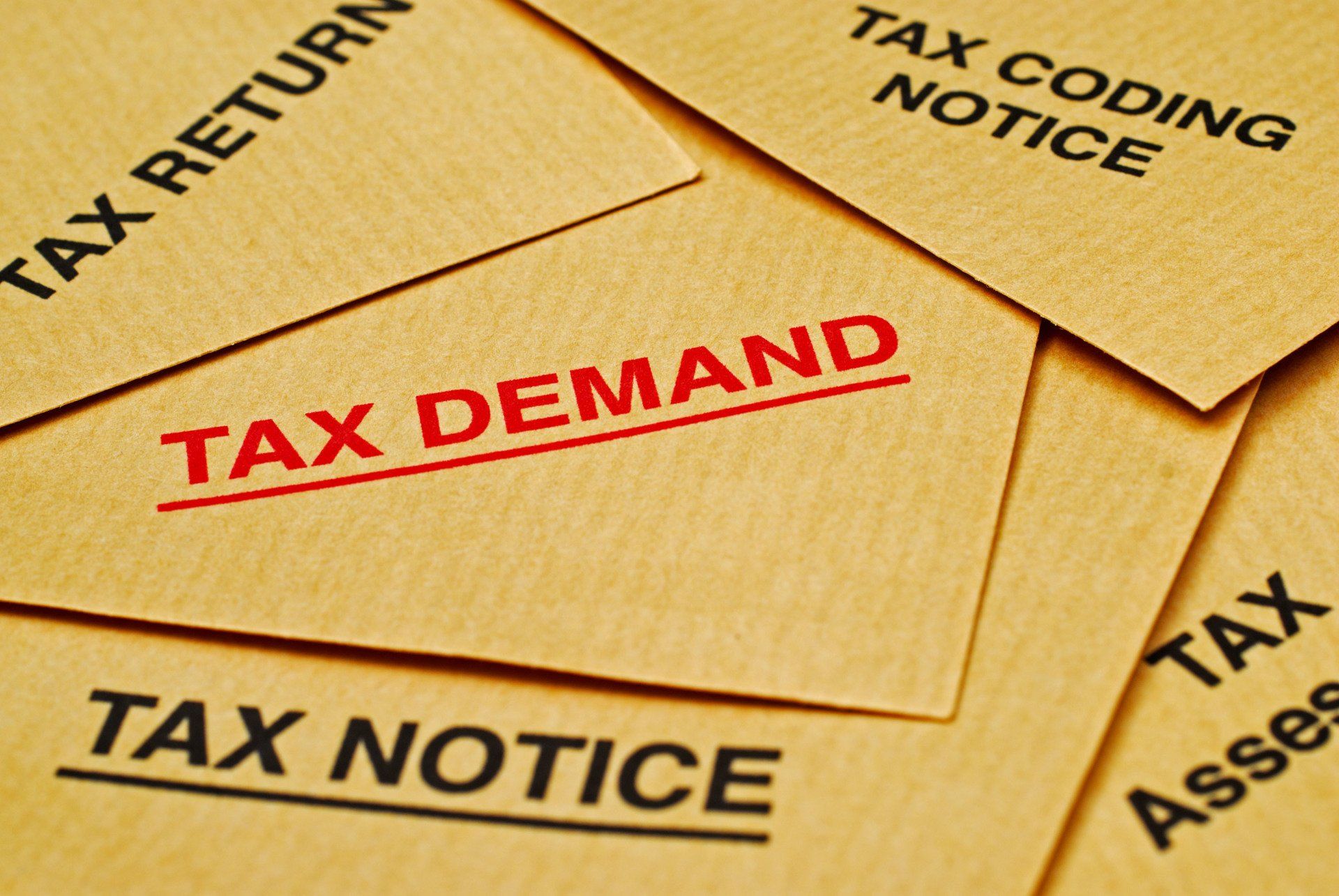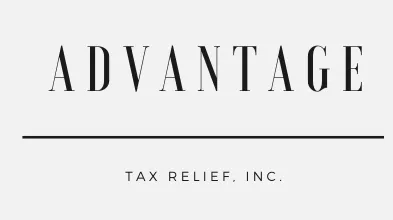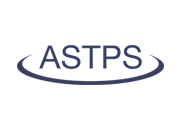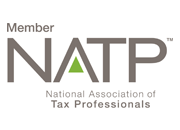How to Negotiate a Payment Plan with the IRS
March 3, 2025

Dealing with the IRS can feel overwhelming, especially if you owe more than you can pay upfront. Thankfully, the IRS offers payment plans to help taxpayers settle their debts over time. By understanding the process and knowing how to negotiate effectively, you can take control of your tax situation and reduce stress. At Advantage Tax Relief, we specialize in helping clients like you navigate the IRS payment plan process. Here’s a step-by-step guide to get you started.
Step 1: Understand Your Tax Debt
Before you can negotiate a payment plan, you need to have a clear understanding of your tax liability. Here’s what to do:
Review IRS Notices: Carefully read all correspondence from the IRS to determine how much you owe, including penalties and interest.
Confirm the Amount: Cross-check the IRS’s numbers with your own records to ensure there are no discrepancies.
Know Your Deadlines: The IRS provides deadlines for resolving your tax debt, so act quickly to avoid additional penalties.
Step 2: Explore Your Payment Plan Options
The IRS offers several payment plan options depending on your financial situation and the amount you owe. These include:
Short-Term Payment Plan: For debts you can pay off within 180 days.
Long-Term Installment Agreement: For larger debts that require more time to repay.
Direct Debit Installment Agreement: Payments are automatically withdrawn from your bank account, which can simplify the process and reduce the risk of default.
Each option has its own eligibility criteria, fees, and benefits. Consulting with a tax resolution professional can help you determine which plan is best for your needs.
Step 3: Gather Necessary Documents
To negotiate effectively, you’ll need to provide the IRS with detailed financial information. Be prepared to gather the following:
Income Statements: Pay stubs, 1099s, or other proof of income.
Expense Documentation: Monthly bills, rent or mortgage statements, utility bills, and other necessary expenses.
Asset Information: Details about your bank accounts, retirement accounts, and property.
Tax Returns: Ensure your past tax returns are filed, as the IRS typically requires this before approving a payment plan.
Step 4: Determine What You Can Afford
Before negotiating, assess your finances to determine how much you can reasonably afford to pay each month. The IRS will require you to submit Form 433-A or 433-F, which details your income, expenses, and assets. Be realistic about your budget to avoid defaulting on your payments.
Step 5: Contact the IRS
Once you’re prepared, it’s time to contact the IRS to initiate the negotiation process. You can do this by:
Calling the IRS: Use the phone number provided on your IRS notice.
Applying Online: For certain payment plans, you can apply directly on the IRS website.
Submitting Forms by Mail: If required, complete and mail the appropriate forms to the IRS.
While it’s possible to handle this on your own, working with a professional can make the process smoother and increase your chances of approval.
Step 6: Negotiate Terms
During your discussion with the IRS, be prepared to negotiate terms that work for both parties. Key points to consider include:
Monthly Payment Amount: Offer an amount you can afford, based on your financial analysis.
Payment Timeline: Discuss how long you’ll need to pay off the debt.
Interest and Penalties: In some cases, the IRS may reduce or waive penalties if you demonstrate financial hardship.
Be polite and honest throughout the negotiation process. The IRS is more likely to work with you if you’re cooperative and transparent.
Step 7: Finalize the Agreement
Once you’ve agreed on a payment plan, the IRS will provide written confirmation of the terms. Review this document carefully and keep a copy for your records. It’s crucial to:
Make Payments on Time: Missing payments can void the agreement and result in enforced collection actions.
Monitor Your Account: Regularly check your account to ensure payments are applied correctly.
Communicate Changes: If your financial situation changes, notify the IRS immediately to discuss modifying your payment plan.
Step 8: Stay Compliant
To maintain your payment plan, you must stay compliant with all IRS requirements. This includes filing future tax returns on time and paying any new taxes owed. Falling out of compliance can result in the termination of your agreement.
Common Challenges and How to Overcome Them
Negotiating with the IRS isn’t always straightforward. Here are some common challenges and how to address them:
High Monthly Payments: If the IRS proposes a payment amount you can’t afford, provide additional financial documentation to support your case.
Rejected Applications: If your payment plan request is denied, work with a tax resolution expert to explore alternative solutions.
Enforced Collections: If the IRS has already initiated wage garnishments or bank levies, act quickly to negotiate a payment plan and stop these actions.
Conclusion
Negotiating a payment plan with the IRS can feel daunting, but it’s a manageable process if you take the right steps. By understanding your options, gathering the necessary documentation, and approaching the IRS with a clear plan, you can resolve your tax debt and regain control of your finances.
At Advantage Tax Relief, we’re here to help every step of the way. Whether you’re starting the negotiation process or need assistance with an existing plan, our team has the knowledge and expertise to ensure a successful outcome.

The IRS in December sent a total of $2.4 billion in "special payments" to roughly 1 million Americans, part of an effort to ensure that people who didn't receive all of their federal stimulus checks during the pandemic would finally get the money. Most eligible taxpayers have already received their Recovery Rebate Credit, as the payment is called, but for those who haven't there is still time to submit a claim. But time is running out, as the deadline to file a claim is April 15. Here's what to know. What to know about the $1,400 IRS stimulus checks The Recovery Rebate Credit was designed for people who didn't get all or some of the stimulus checks when they were issued during the pandemic. Lawmakers authorized three stimulus payments, with two sent in 2020 and a third in 2021. The checks are a holdover from the three stimulus payments that were sent during the pandemic, as some people may not have received some of the money, even if they were eligible. The tax agency disbursed the funds after reviewing internal data that showed many people had filed tax returns but yet didn't claim what is known as the "recovery rebate credit" in 2021. However, non-filers, or those who have not filed Payment amounts will vary by person, with a maximum amount of $1,400 per recipient, the agency said in a statement. Who will get a payment from the IRS? Most taxpayers who were eligible for the stimulus payments have already received them directly, or later through the recovery rebate credit, the IRS said. However, the encourages non-filers to claim credits before the approaching April 15 deadline, as they may be eligible for the the up to $1,400 payment. Who is not eligible for a payment from the IRS? The eligibility requirements to file a claim to the 2021 Recovery Rebate Credit are as follows: -You are a legal U.S. resident. -Either you or someone you claim as a dependent has a valid Social Security Number or Adoption Taxpayer Identification Number issued by the IRS. -You cannot be claimed as a dependent on another taxpayer's 2021 tax return. -See here for more information on eligibility. Do you need to apply for the IRS payment? For those who have not yet received a payment, the answer is yes. While most eligible taxpayers have already received the funds through automatic payments, eligible non-filers will have to file a claim in order to get their payment. In order to claim the 2021 Recovery Rebate Credit, taxpayers must file a 2021 tax return by the April 15, 2025, deadline, "even if their income from a job, business or other source was minimal or non-existent," according to the IRS' website. Detailed information on how to file a claim for the 2021 credit can be found here. When will the IRS send the payments? The tax agency said the checks will be sent in December, with most of the payments arriving by late January 2025. The money will either be automatically direct deposited to the recipient's bank account or will arrive in the mail via a paper check. Contact us today for all your IRS needs! {{content_library.global.phone.148012611}}

Tax season started in late January, but the IRS’s latest statistics show that many Americans are still waiting to file their taxes. As of February 7, 7.7% fewer tax returns have been received by the agency compared to a similar time frame last year, according to its latest data release. While the IRS expects filing numbers to even out, the IRS.gov website has experienced a 40% decline in visits this year to date over last year. Francine Lipman, CPA, a tax law professor at the University of Nevada, Las Vegas, says the reasons could be endless but probably come down to simple procrastination. “Despite all the Super Bowl ads, I don’t believe that tax issues are on people’s radar yet,” adds Lipman. This is surprising considering the political climate, says Jordan Rippy, an accounting professor at Johns Hopkins University’s Carey Business School, who expected to see an uptick in returns filed this year. “Given the general climate surrounding the new administration, I would have expected more anxiety in the general population and a desire to receive refunds more quickly,” she tells Fortune. Elon Musk’s Department of Government Efficiency (DOGE) reportedly visited the IRS on Thursday to begin analyzing the agency’s operations. Senator Ron Wyden (D-OR), ranking member of the Senate Finance Committee, later posted on X that “if your refund is delayed, they could very well be the reason.” Average tax refunds are higher this year so far The rise in electronic filing is one of the biggest changes to the tax system in the last decade. With over 90% of individual taxpayers now filing their returns online, the process has become easier to handle for many Americans. But taxpayers still miss out on over $7 billion in underclaimed and unclaimed tax credits and deductions each year. In the 2025 tax season to date, tax filers have received a 18.6% increase in their average refund amount ($2,065) compared to this time last year ($1,741). The IRS cautions this isn’t a perfect indicator of the final trend in tax refunds, since it’s early in the season. The agency says most refunds are issued within 21 days. In the final analysis, the average refund last year was around $3,138. Compared to 10 years prior, last year’s average rebate was down nearly 30% on an inflation-adjusted basis. Rippy says she is surprised that average tax refunds have not decreased more as Americans realize they can adjust their withholdings and get more money per paycheck throughout the year. “If you receive a large tax refund, what you've essentially done is given a loan to the government over the last year that you didn't have to give them, and you've done that interest-free,” says Rippy. At the same time, she admits that the fact that many Americans expect a big refund year after year is a good thing, as it’s a form of forced savings. While many end up saving their refund, others use it to pay down debt, make a home improvement, or go on vacation.

If you’re dealing with IRS wage garnishment, it can feel like you're trapped in a difficult situation. The IRS can take a portion of your paycheck to satisfy your tax debt, causing serious financial strain. However, you do not have to face this alone. There are steps you can take to stop garnishment and restore control over your finances. This guide will help you understand what wage garnishment is, why it happens, and what actions you can take to end it. Understanding IRS Wage Garnishment Wage garnishment is a legal tool used by the IRS to collect unpaid taxes. Unlike many other types of debt collection, the IRS does not need a court order to garnish your wages. They will send you a Final Notice of Intent to Levy before initiating garnishment, and if you don't act, they will take a portion of your paycheck to pay off your tax debt. How Wage Garnishment Affects You Wage garnishment can create numerous challenges, including: - Loss of Income: With part of your wages withheld, it can be difficult to meet daily living expenses. - Damage to Your Credit: Unresolved tax debts and garnishments can hurt your credit rating, making it difficult to obtain loans or secure favorable financing terms in the future. - Stress and Emotional Toll: The financial pressure can create stress, affecting your mental health and relationships. Professional Impact: If colleagues find out about the garnishment, it could affect your reputation at work. Steps to Take to Stop IRS Wage Garnishment If you’re facing wage garnishment, take action quickly to put an end to it: 1. Respond to IRS Notices Immediately If you receive any IRS notice about garnishment, it's vital to act quickly. Ignoring it will only escalate the situation. Contact the IRS and request a Collection Due Process hearing where you can address the garnishment. 2. Explore Payment Plans and Agreements The IRS offers various options to settle your debt, such as installment agreements or an Offer in Compromise (OIC). These options allow you to repay your debt over time or settle it for less than what you owe. 3. Apply for Hardship Relief If the garnishment is putting you in financial distress, you may qualify for a hardship exemption, which can temporarily stop the garnishment while you work out a solution. 4. Contest the Tax Debt If you believe the IRS has made a mistake in assessing your tax debt, you have the right to dispute it. During this dispute process, garnishment can be put on hold until the matter is resolved. 5. Seek Professional Help Dealing with the IRS alone can be overwhelming. A skilled tax professional can help you navigate the complex process, negotiate with the IRS, and secure the best possible resolution for your situation. Why You Should Work with Advantage Tax Relief The process of stopping IRS wage garnishment requires specialized knowledge and experience. Advantage Tax Relief, located in Itasca, IL, offers over a decade of experience in tax resolution. Their team of experts knows how to work with the IRS to resolve wage garnishment issues and put together a personalized plan for you. Working with Advantage Tax Relief means having a dedicated partner who understands the nuances of IRS procedures and will advocate on your behalf to reach a favorable resolution. Their team will help you explore all options, including negotiating payment plans, filing for hardship relief, or contesting tax assessments. Take Action Today Don’t let wage garnishment control your life. Contact Advantage Tax Relief in Itasca, IL at 630-773-3200 for a consultation. Their team is ready to guide you through this process, offering the help you need to regain control of your finances and find relief from the IRS.







Share On: